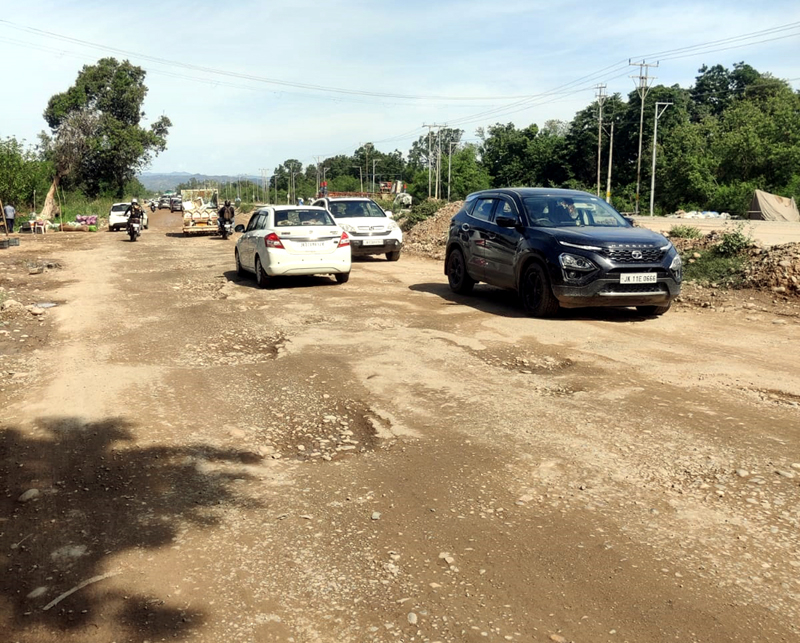The Jammu-Akhnoor 4-lane road project, which was sanctioned by the GoI in 2015, has missed several deadlines and is nowhere close to completion, even in 2023. The contract was awarded to M/s Tarmat Limited, which has sublet work to local contractors. The company has even failed in many aspects all along the under-construction road, and the UT administration and NHIDCL have remained mute spectators despite repeated efforts to bring these to the attention of the authorities. Commuters, especially patients, are facing difficulties due to the bumpy and rough drive on the broken road patches at many places.
The project is part of the Prime Minister’s Development Package and was declared NH-144-A, a priority project for both the Central Government and the Union Territory administration, yet the project has missed numerous deadlines. The EPC contractor, M/s Tarmat Limited, has failed to mobilise adequate resources, manpower, materials, machinery, and plant equipment, leading to defaults and breaches of the contractual stipulations. The contractor alleges that NHIDCL authorities are causing delays in making payments, and land at many places was not made available by them for executing work. The work on the bridge over the canal has been suspended due to a dispute over the design. Much delay in providing land under the Army for the execution of work has further delayed things beyond the contractor’s work scope. It seems that almost eight years is not sufficient time for authorities to resolve all niggling issues in time.
Getting a contract and then subletting it to various small contractors, who in turn sublet the work to small part-time contractors without any work experience on such mega projects. The net result is numerous contractor-related issues, such as poor project management, a shortage of skilled labour, and a lack of coordination among different contractors involved in the project. NHIDCL has failed to supervise this aspect miserably.
Road construction projects often involve various activities such as excavation, asphalt laying, and the installation of road furniture. Unfortunately, these activities can cause significant traffic congestion, which can result in delays, accidents, and air pollution. Additionally, changes in traffic flow and road conditions can lead to confusion and accidents, which is why it is important to provide proper macadamized service lanes. Regrettably, such lanes are missing throughout the ongoing construction. Moreover, construction activities like drilling, excavation, and paving can create a lot of noise, leading to noise pollution, while the generation of dust from these activities can cause respiratory problems and other health hazards for those living or working near the site. Despite these risks, both the NHIDCL and UT administration have failed to intervene and enforce regulations, leaving the local people to suffer for years.
The construction of the highway has also resulted in the cutting down of trees along the route, depriving residents of much-needed greenery. Furthermore, the construction activities have the potential to weaken buildings located close to the project site. Unfortunately, no survey has been conducted to assess the potential risks associated with this issue. With flood channels blocked due to construction, flash floods last year played havoc.
The project has already incurred significant cost escalation, but no accountability has been established to recover the losses. The lack of air quality reports, water sprinkling to settle the dust, and nets to control dust movement are significant flaws in the construction process. It appears that the authorities are more interested in concealing the issues by giving contractors too much leeway. The local people have no choice but to bear the never-ending hardships caused by the project’s delay.


